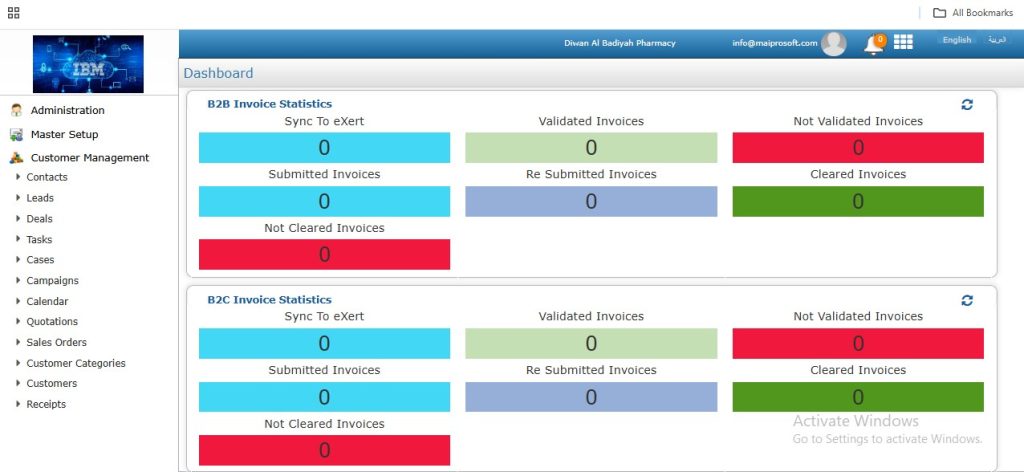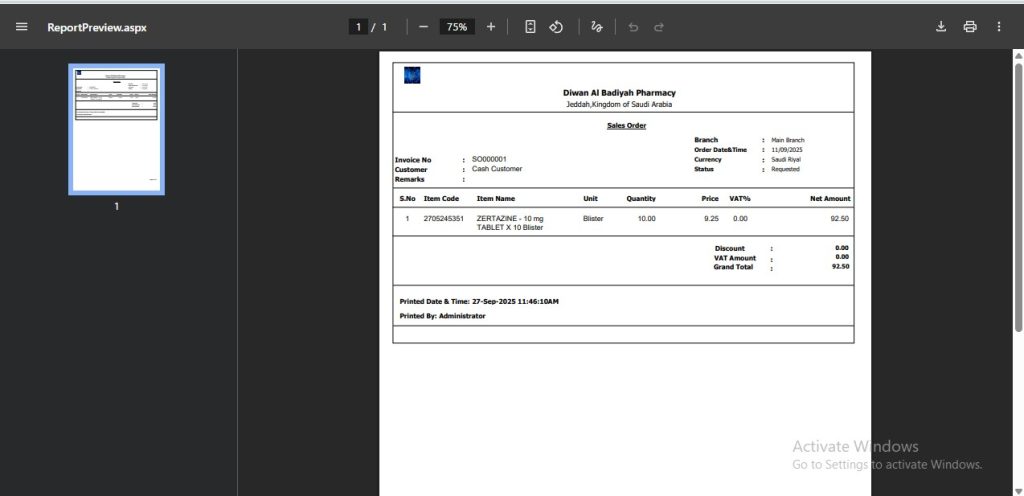1. Introduction
This project focuses on the Customer Management (CRM) module as part of the Enterprise Resource Planning (ERP) system. ERP integrates various business processes, and CRM specifically deals with managing customer-related activities such as contacts, leads, sales, and customer service. The project provides practical exposure to both functional and technical aspects of CRM in ERP.
2. Core ERP Modules
2.1 Administration
The Administration module is responsible for defining and maintaining the basic organizational setup. It allows managing resources, defining company information, and maintaining location masters such as countries and cities. This ensures that the ERP has structured foundational data for CRM and other modules.
2.2 Security Management
This module ensures that users can only access what they are permitted to. Roles are defined to control permissions, users are created and assigned to branches, and branch assignments help segregate access across multiple business units. It plays a critical role in maintaining data security and role-based access control.
2.3 Master Setup
The Master Setup module is used to configure global settings across the ERP system, acting as the backbone of the CRM process. It includes options for defining organizational branches, managing business partners, and updating user credentials through the change password functionality.
Within Master Setup, the Customer Management Masters are also available, which include the following sub modules:
– Lead Sources
– Email Template
– Competitor
– Case Reasons
– Contact Type
3. Modules in CRM
The Customer Management (CRM) module in ERP is designed to handle customer-related operations efficiently. It provides functionalities to manage customers throughout their lifecycle, from the first interaction to after-sales support. The submodules include:
– Contacts: Maintain customer and business contact details.
– Leads: Manage potential customers and their initial inquiries.
– Deals: Track opportunities and sales deals with customers.
– Tasks: Manage tasks and activities related to customers.
– Cases: Handle customer complaints, issues, and resolutions.
– Campaigns: Manage marketing campaigns and customer outreach.
– Calendar: Maintain schedules, meetings, and customer appointments.
– Quotations: Generate and manage price quotations for customers.
– Sales Orders: Record confirmed customer sales orders.
– Customer Categories: Classify customers into various categories.
– Customers: Maintain detailed customer profiles.
– Receipts: Track and manage payments received from customers.
4. Technical Architecture
The technical implementation of the Customer Management (CRM) module is structured into multiple layers, ensuring separation of concerns, scalability, and maintainability.
– Frontend: ASP.NET WebForms (ASCX, ASCX.CS, Design files, JavaScript)
– Backend: BAL (Business Access Layer), DAL (Data Access Layer), Factory classes
– Database: Microsoft SQL Server
– Programming Language: C#
5. What Will Be Learned After Doing This Project
By working on this project, you will gain an understanding of both functional and technical aspects of CRM in ERP. You will learn how customer data is managed, how business processes are automated, and how different layers of application architecture (frontend, backend, and database) interact in a real-world system. Additionally, you will acquire hands-on experience with ASP.NET WebForms, SQL Server, and layered application design in C#.








